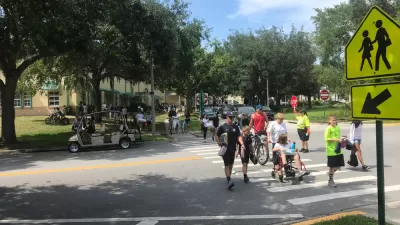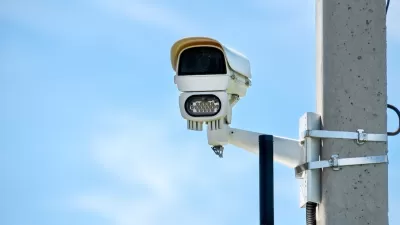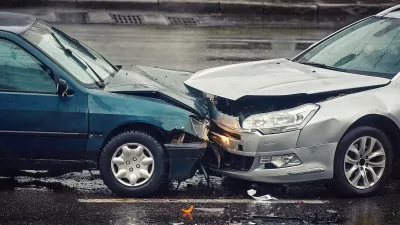Officials point to speeding and reckless driving as causes for the increase in fatal crashes.

According to the Illinois Department of Transportation, traffic deaths are up 10% from 2020, reports Marni Pyke. "State tallies show that 621 people died in vehicle crashes this year as of Thursday compared with 566 between Jan. 1 and July 22, 2020. There were 554 fatal crashes as of Thursday this year and 519 in the same time period in 2020."
Officials say "it will take some time for the complete data behind the numbers to emerge," but "we do know anecdotally from law enforcement that speeding and reckless driving likely increased with deadly consequences during the pandemic, and continues as more cars are on the road in Illinois and throughout the country," said IDOT spokeswoman Maria Castaneda.
The department added that "[n]early 39% of traffic deaths occurred on city streets, and nearly 27% took place on federal or state routes." According to Joseph Schwieterman, "[p]eople are driving more outside of normal rush hour when the travel speeds tend to be high. That is making accidents more deadly."
Advocates like Jim Merrell of the Active Transportation Alliance say that poor road design enables speeding, and that "[s]olutions could include bike lanes, crosswalks and narrowing traffic lanes" to slow cars and provide safer infrastructure for pedestrians and cyclists.
FULL STORY: Is it speeding? Pandemic joy rides? Experts explain 10% spike in crash fatalities

Trump Administration Could Effectively End Housing Voucher Program
Federal officials are eyeing major cuts to the Section 8 program that helps millions of low-income households pay rent.

Planetizen Federal Action Tracker
A weekly monitor of how Trump’s orders and actions are impacting planners and planning in America.

Ken Jennings Launches Transit Web Series
The Jeopardy champ wants you to ride public transit.

Washington Legislature Passes Rent Increase Cap
A bill that caps rent increases at 7 percent plus inflation is headed to the governor’s desk.

From Planning to Action: How LA County Is Rethinking Climate Resilience
Chief Sustainability Officer Rita Kampalath outlines the County’s shift from planning to implementation in its climate resilience efforts, emphasizing cross-departmental coordination, updated recovery strategies, and the need for flexible funding.

New Mexico Aging Department Commits to Helping Seniors Age ‘In Place’ and ‘Autonomously’ in New Draft Plan
As New Mexico’s population of seniors continues to grow, the state’s aging department is proposing expanded initiatives to help seniors maintain their autonomy while also supporting family caregivers.
Urban Design for Planners 1: Software Tools
This six-course series explores essential urban design concepts using open source software and equips planners with the tools they need to participate fully in the urban design process.
Planning for Universal Design
Learn the tools for implementing Universal Design in planning regulations.
Heyer Gruel & Associates PA
Ada County Highway District
Institute for Housing and Urban Development Studies (IHS)
City of Grandview
Harvard GSD Executive Education
Toledo-Lucas County Plan Commissions
Salt Lake City
NYU Wagner Graduate School of Public Service





























